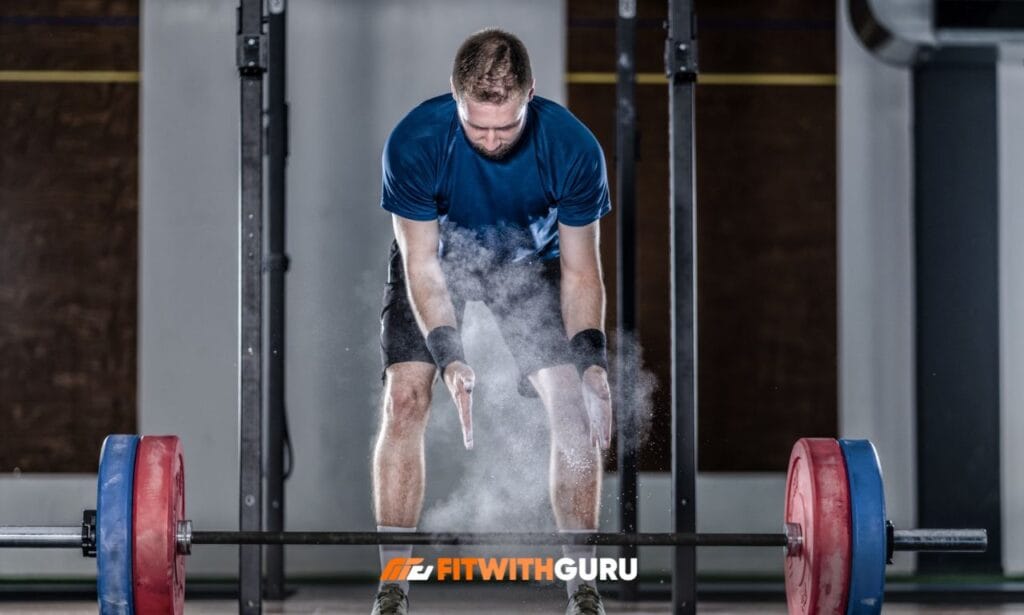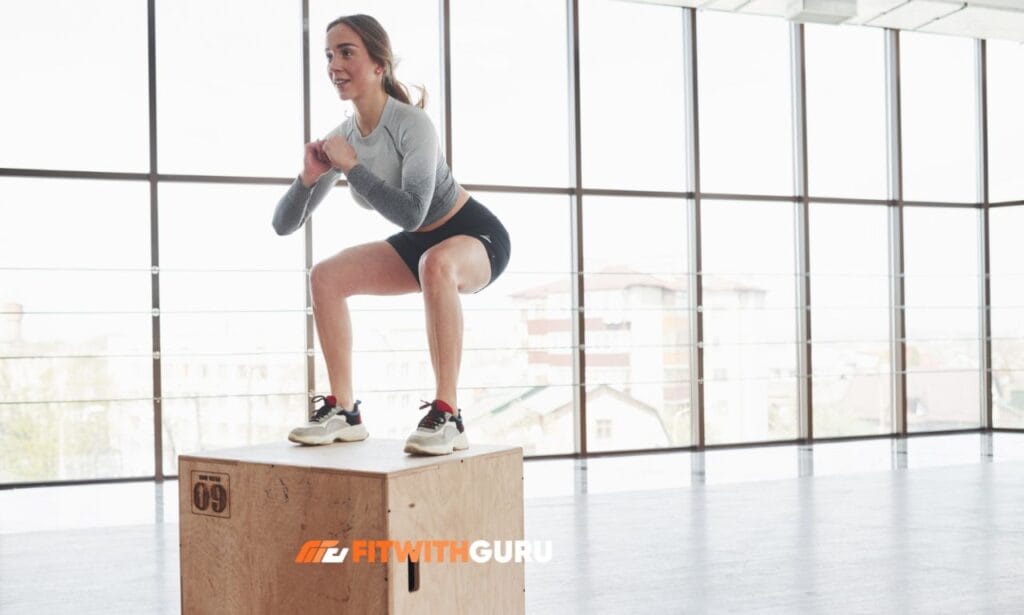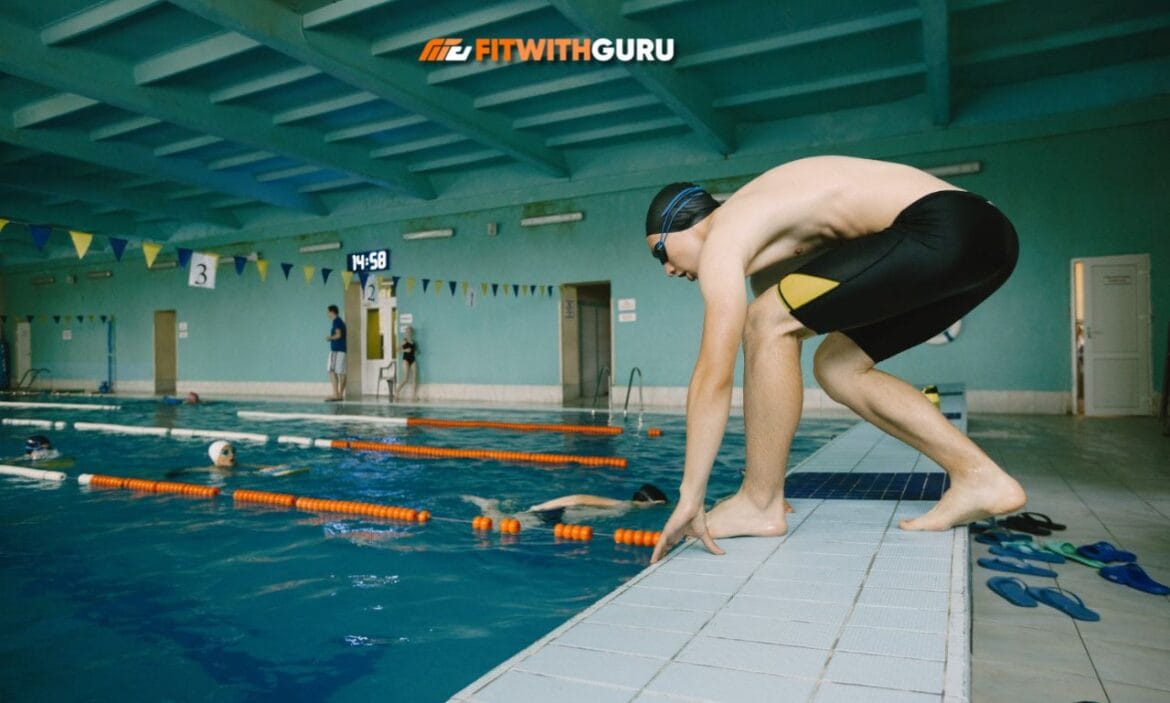Strength training for swimmers is a crucial part of enhancing overall performance. It goes far beyond just building muscle mass; it focuses on functional strength that directly improves your swimming abilities. Strength training can help swimmers boost their speed, power, and endurance in the water, making it an essential addition to any training plan.
When swimmers incorporate strength training into their routines, they improve not just their strength, but also their technique, injury resilience, and body awareness in the water. In this article, we’ll explore the top 8 strength training exercises that can significantly boost speed and power for swimmers.
The Importance of Strength Training for Swimmer
Strength training isn’t about building bulk or excessive muscle mass. Instead, it’s about creating functional strength that supports swimming performance. Targeting muscles crucial for swimming strokes can enhance swimming efficiency, increase power, and reduce the risk of injuries.
By integrating strength training into their routines, swimmers can increase their propulsion in the water, which helps them swim faster and maintain efficiency during races. Here’s why strength training is so important for swimmers:
- Improved Stroke Power: Stronger muscles in the arms, legs, and core help swimmers generate more force with every stroke.
- Injury Prevention: Strengthening key muscles helps prevent overuse injuries, which are common among swimmers.
- Enhanced Endurance: Strong muscles resist fatigue, allowing swimmers to maintain a higher level of performance over long distances or multiple laps.
Top 8 Strength Training Exercises for Swimmers
Now that we understand the benefits of strength training for swimmer, let’s take a look at the top 8 exercises that can directly improve swimming performance.
1. Deadlifts
One of the best strength training activities for swimmers is the deadlift. They target the posterior chain, including the glutes, hamstrings, and lower back muscles that are critical for powerful kicks and maintaining a strong body position in the water. Deadlifts also help build overall body strength, which translates to better control and stability during swimming.

2. Pull-Ups
Pull-ups are a fantastic upper-body workout, particularly for strengthening the lats and biceps, muscles used extensively in strokes like freestyle and backstroke.
Having strong lats can improve a swimmer’s arm recovery and pulling efficiency. Pull-ups also engage the shoulders and core, making them an excellent choice for swimmers aiming to boost their stroke power.
3. Squats
Squats are foundational for building leg and core strength, which are essential for powerful kicks, strong push-offs from the pool wall, and stability during strokes.
Swimmers who regularly perform squats will find it easier to generate more force with every kick and maintain a balanced body position in the water.
4. Medicine Ball Slams
Medicine ball slams are a dynamic, full-body exercise that enhances explosive power. This exercise mimics the powerful, rapid movements required for sprint swimming.
By engaging the core, shoulders, and legs, swimmers can improve their power output, making them more effective during fast starts and quick turns. Medicine ball slams also improve core stability, crucial for maintaining streamlined body positions.
5. Planks
One of the greatest exercises for building core stability is the plank. Core strength plays a significant role in a swimmer’s ability to maintain proper body alignment, reduce drag, and execute efficient strokes.
By regularly practicing planks, swimmers can improve their swimming posture, optimize their breathing technique, and develop endurance for longer races.
6. Kettlebell Swings
Kettlebell swings target the hip flexors, glutes, and lower back—areas that are crucial for generating speed in the water. This exercise helps swimmers develop explosive power, which is essential for strong starts, turns, and fast kicks.
Kettlebell swings also increase flexibility and mobility in the hips, which can help improve swimming technique, particularly in strokes like the butterfly.
7. Resistance Band Training
Resistance bands are an excellent tool for swimmers looking to build strength in the shoulders, arms, and core. Bands provide consistent tension during movement, which helps swimmers engage muscles more effectively.
Resistance bands can be used to simulate swimming motions like freestyle or butterfly strokes, helping swimmers improve both strength and technique simultaneously.
8. Box Jumps
Box jumps are a plyometric exercise that focuses on developing explosive power and leg strength. This movement is crucial for improving starts and turns, which are vital elements in competitive swimming.
Box jumps improve coordination and agility, while also strengthening the muscles necessary for powerful kicks and quick push-offs from the pool wall.

How Often Should Swimmers Incorporate Strength Training into Their Routine?
For swimmers, strength training should be incorporated into their training routine 2-3 times a week. This allows athletes to target key muscle groups without overloading their bodies.
It’s essential to balance strength training with swim workouts to avoid fatigue. Swimmers should ensure that strength training sessions are spaced out enough to allow muscles to recover between workouts.
Should Swimmers Focus More on Upper or Lower Body Strength?
The focus on upper versus lower body strength will depend on the swimmer’s specific stroke. For example, freestyle and backstroke swimmers may need to prioritize upper body strength, while butterfly and breaststroke swimmers may need to put more emphasis on their legs and core.
However, a balanced approach is crucial, as both upper and lower body strength contribute to overall swimming performance.
Additional Tips for Maximizing Strength Training for Swimmer
To get the most out of strength training, swimmers should keep these tips in mind:
- Focus on compound movements: Exercises like squats, deadlifts, and pull-ups engage multiple muscle groups, making them ideal for building overall strength and endurance.
- Proper form is key: Technique should always be prioritized. Poor form can impede progress and cause damage.
- Allow for adequate recovery: Strength training can place significant stress on the muscles, so it is essential to allow for adequate recovery time to make progress.
- Incorporate swimming technique training: While strength training is essential, swimmers should not neglect the importance of stroke technique during practice.
People Also Ask
1. How does strength training help swimmers improve speed?
Strength training helps swimmers improve speed by developing power in the muscles that generate each stroke. Stronger muscles in the legs, arms, and core allow swimmers to generate more force with each movement, reducing drag and increasing speed.
2. Can strength training cause swimmers to get bulky?
No, strength training for swimmer is focused on building lean, functional muscle rather than bulk. By using higher repetitions with moderate weights, swimmers can improve strength and endurance without gaining excessive muscle mass.
3. How often should swimmers incorporate strength training into their routine?
Strength training should be incorporated by swimmers two to three times a week. This frequency allows the body sufficient time to rest between sessions while still promoting muscle growth.
4. What are the best strength training exercises for swimmers?
Deadlifts, pull-ups, squats, planks, medicine ball slams, kettlebell swings, resistance band training, and box jumps are the finest strength training activities for swimmers. These exercises target key muscle groups for improved swimming performance.
5. Should swimmers focus on strength training during the off-season or year-round?
Strength training should be incorporated year-round, but it is especially important during the off-season when swimmers can focus on building a solid foundation of strength without the intense demands of competition. During the season, strength training can focus more on maintaining muscle strength and preventing injury.
Conclusion
Strength training for swimmer is a powerful way to boost speed, power, and overall performance in the water. By targeting the key muscles used in swimming strokes, athletes can become stronger, faster, and more resilient.
Incorporating these 8 strength training exercises into your routine will have a noticeable impact on your swimming abilities, helping you achieve better race times and enhance endurance. Remember, consistency is key, and with the right training, your swimming performance will continue to improve.

